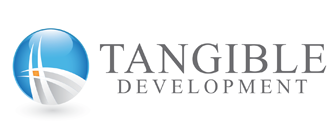This week we’re excited to team up with our friends from Tangible Development, global diversity and inclusion experts, to share insights about an extremely important topic—diverse and inclusive hiring.

It’s no secret, we believe strongly in the need for this in today’s workplace, but unfortunately all too often hiring managers are following dated, unconsciously bias patterns when it comes to hiring. To move forward, it’s essential to build a team that celebrates diversity and includes everyone at the table. It’s truly the best way for an organization to innovate and grow.
When hiring for diversity and inclusion, employers must consider:
Diversity
Is the language in job posts gender-coded? Are terms being used that imply or assign particular traits or behaviors exclusively or predominantly to males or females?
How many qualifications are required? While men apply for a job when they meet 60% of the requirements, women tend to only apply when they meet 100%. Consider using alternative language such as “familiarity with” or “comfortable with” to encourage more applicants from both genders.
From which sources are you recruiting candidates? Are you posting broad and wide and including community centers and cultural organizations, colleges/universities and student groups and US and local agencies?
Are you sending the right message by adding a diversity and inclusion statement to job postings? This indicates to candidates your organization is actively seeking a diverse workforce and creating an inclusive company culture. IBM is a great example of how to do this.
Inclusion
Why is inclusion important? Without inclusion, you cannot harness the power of your diverse workforce. Inclusion creates connections and establishes the level of comfort required for employees to openly share ideas and feedback that fuel innovation.
How can you foster inclusion in your workplace?
- Restructure Employee Resource Groups (ERGs): Focus on goals and projects (as opposed to demographics) to remove silos and encourage cross-organizational collaboration
- Take an Implicit Association Test: Discover how some of your own biases may impact your working relationships
- Host a potluck: Encourage all employees to share dishes across cultures (tamales/Mexico) and generations (Dunkaroos/millennials)
- Point out interruptions: Women are more often interrupted than men. Pointing out interruptions will draw attention to this and help reduce these occurrences, which will increase inclusivity
- Rotate who runs meetings: Different meeting styles keeps things fresh and offers autonomy to all members of the team
And we can’t ignore what adopting a more diverse and inclusive culture does for your bottom line. According to Deloitte Review, companies with inclusive cultures are
- 2x as likely to meet or exceed financial targets
- 3x as likely to be high-performing
- 6x as likely to be innovative and agile
- 8x as likely to achieve better business outcomes
Inclusive cultures engage employees. Engaged employees are less likely to leave their companies. Attrition levels decrease reducing costs for organizations. Leveraging your diverse talent by fostering inclusion promotes innovation, growth and profitability. According to the Boston Consulting Group, “companies that reported above-average diversity on their management teams also reported innovation revenue that was 19 percentage points higher than that of companies with below-average leadership diversity.”
At Alaant, we 100% agree with Tangible Development’s belief that diverse hiring is more than an equal employment opportunity (EEO) statement, it's a business imperative. We partner with Tangible Development to ensure we are helping our clients fully embrace the importance and benefits of creating a diverse and inclusive workplace to remain viable in today’s global market, it is critical for organizations to harness the power of Inclusive Diversity. So, let’s get to work, contact us.
About the Authors

Sujata N Chaudhry, Founder & CEO, Diversity Specialist, Inclusion Catalyst & Global Educator, Tangible Development
Sujata combines experience, perspectives and education making her a unique trainer who brings a personal understanding of diversity together with American corporate sensibility. She has worked with industry leaders in finance, property management, hospitality, non-profit, healthcare, and science-technology to leverage diversity and inclusion to support the sustainability, viability and strategic vision of organizations.

Brittany Lawton, Global Marketing & Brand Manager, Tangible Development
As a millennial, Brittany grew up in the digital revolution and thoroughly understands how tightly connected the world is because of the technology readily available. She works with Tangible Development’s diverse clients helping them to better understand the “business without borders” atmosphere technology has revolutionized.
